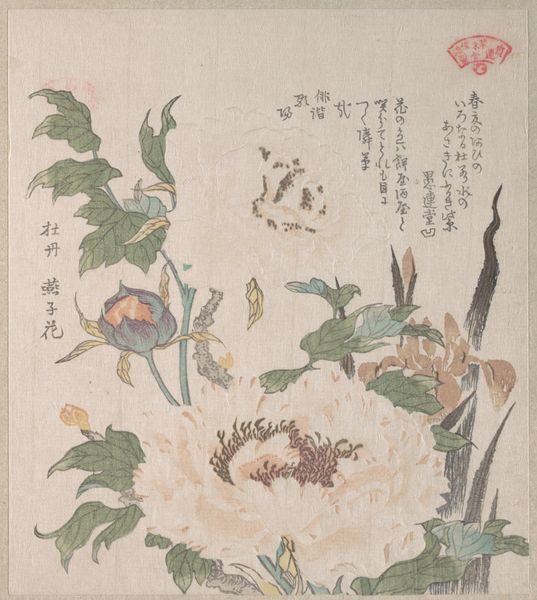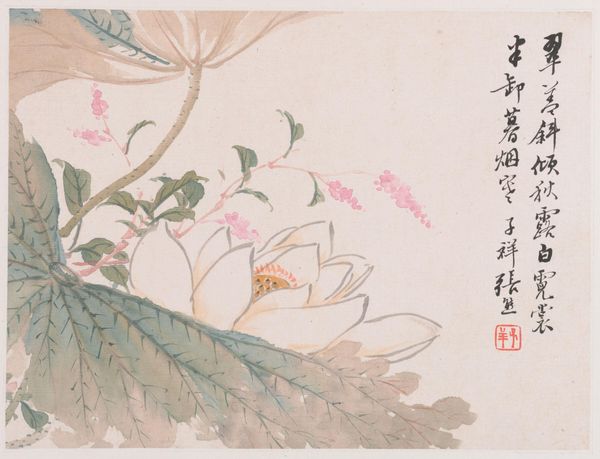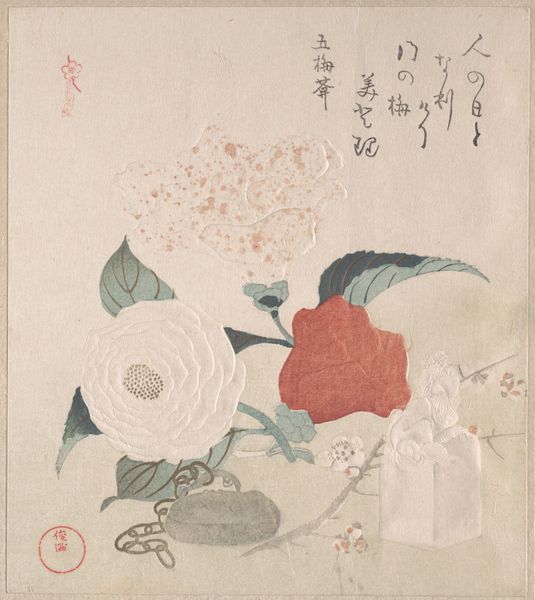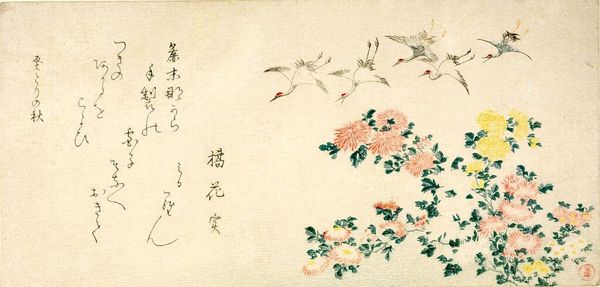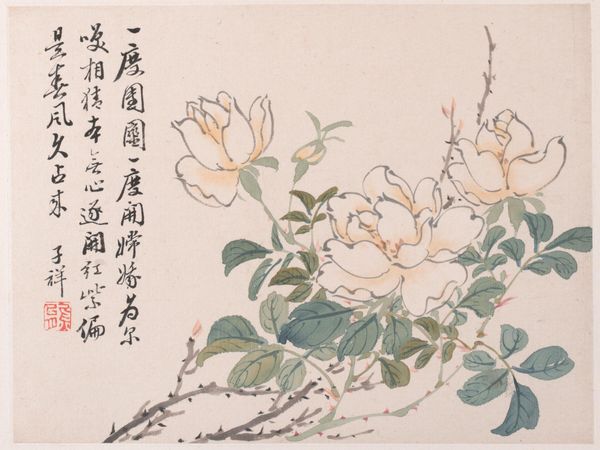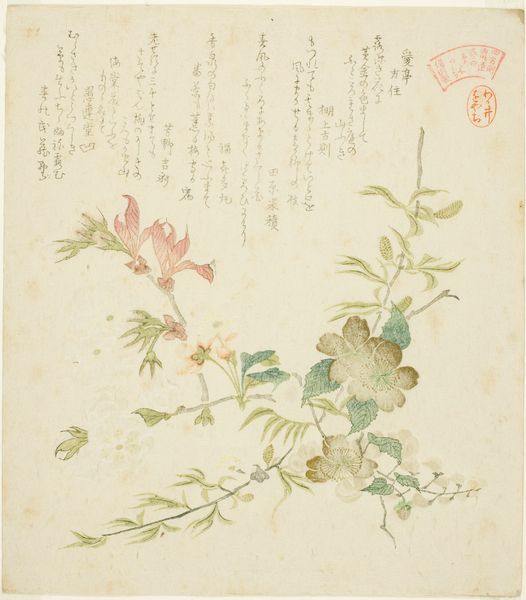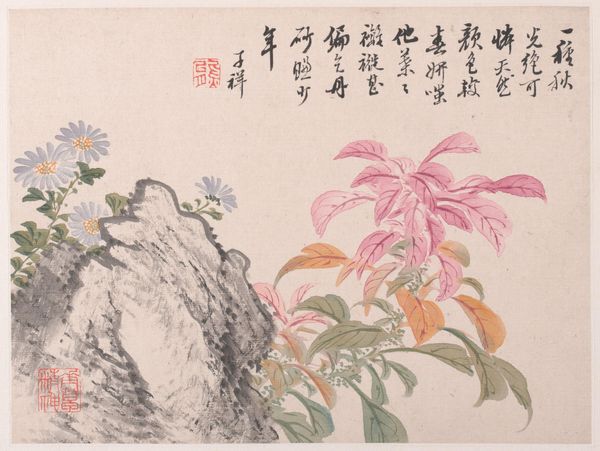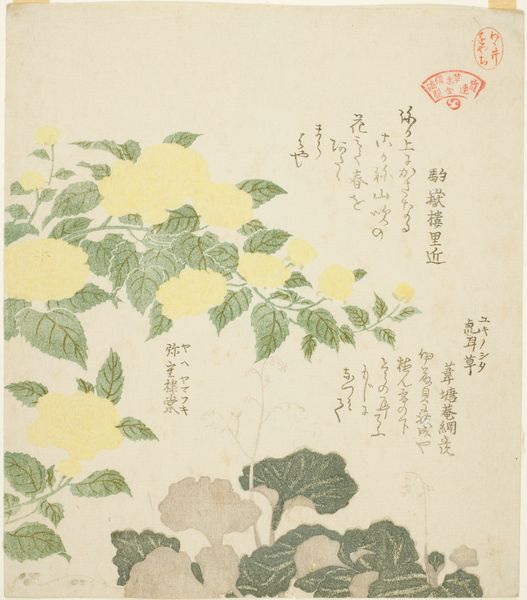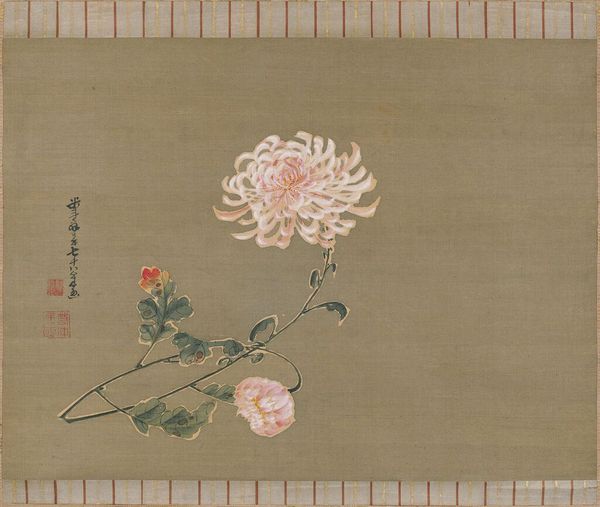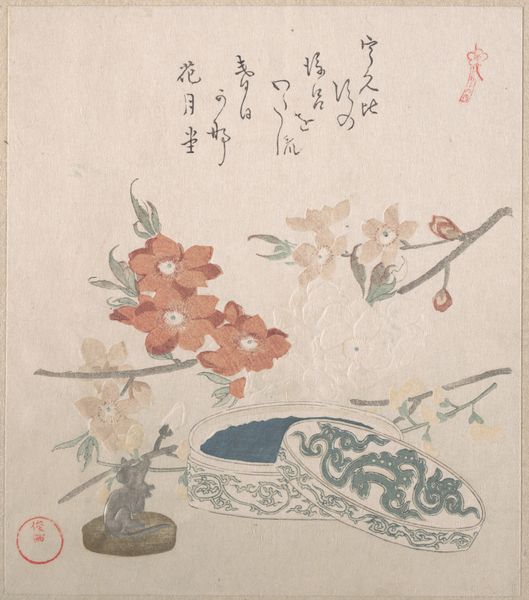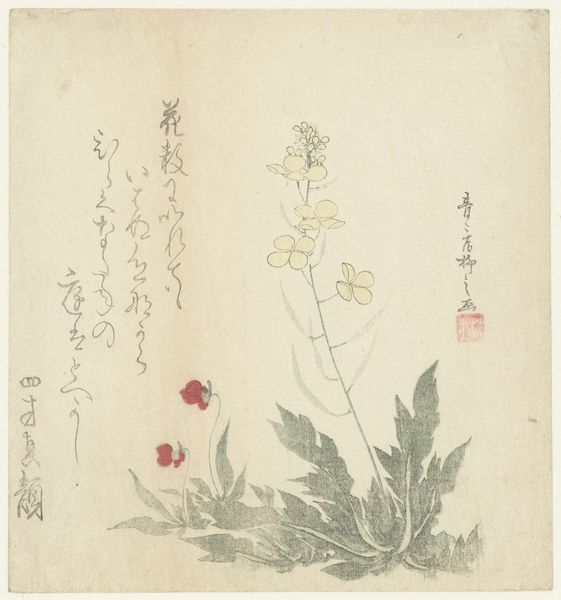
Iris (Kakitsubata) and Peony (Botan), from the series An Array of Plants for the Kasumi Circle (Kasumi-ren sÅmoku awase), with poems by Gurendo Nakakubo and Haikai Utaba (Utagaki Magao) c. 1804 - 1815
0:00
0:00
Dimensions: Paper: H. 20.9 cm x W. 18.4 cm (8 1/4 x 7 1/4 in.)
Copyright: CC0 1.0
Curator: This woodblock print, Iris and Peony, from Kubo Shunman's series *An Array of Plants for the Kasumi Circle*, whispers of tranquility. It's delicate. Editor: I'm drawn to the tension in the layered ink work, the way the lines convey both fragility and a vibrant life force. Curator: Shunman was a key figure in the Edo period's artistic landscape. The Kasumi Circle was a poetry and art club, so this print engages with complex social and intellectual networks of the time. The presence of text intertwines visual and literary narratives. Editor: Absolutely. The poems, combined with the deliberate composition, speak to a refined understanding of nature and its reflection of societal ideals. We see the careful creation of pigments, the printmaking process, all point to the labor involved in this aesthetic. Curator: Exactly, and the choice of iris and peony—symbols of different social groups and cultural values—highlights the intricate dance between identity, status, and artistic expression. Editor: Examining the materiality reveals the work's place within a larger system of production and consumption, and deepens our understanding of its cultural value. Curator: It’s a beautiful example of how art can be both aesthetically pleasing and deeply embedded in historical and social context. Editor: Indeed, a testament to the power of process to reveal deeper meaning.
Comments
No comments
Be the first to comment and join the conversation on the ultimate creative platform.
